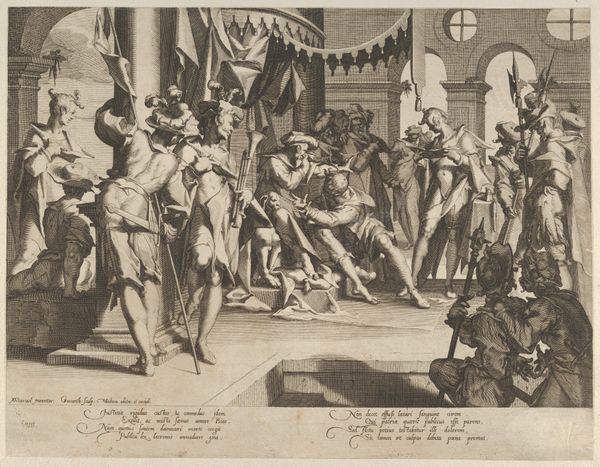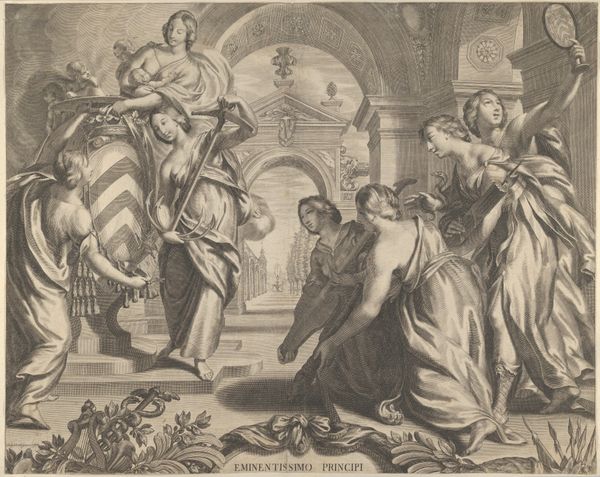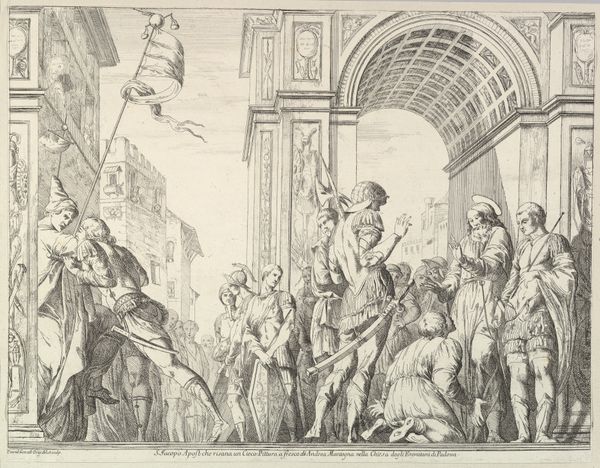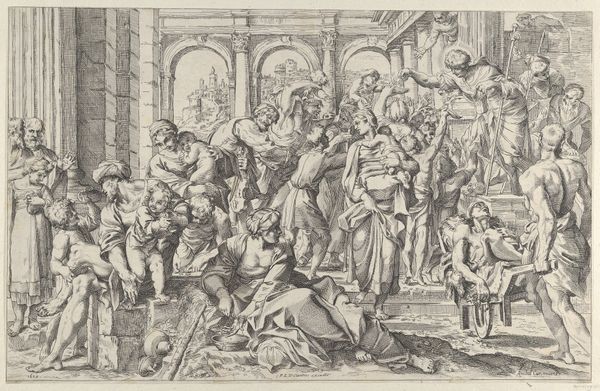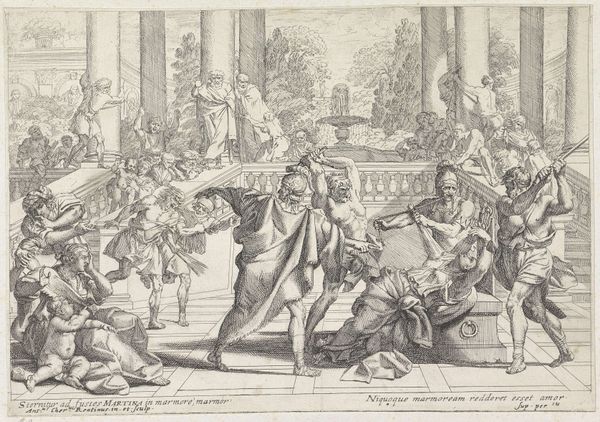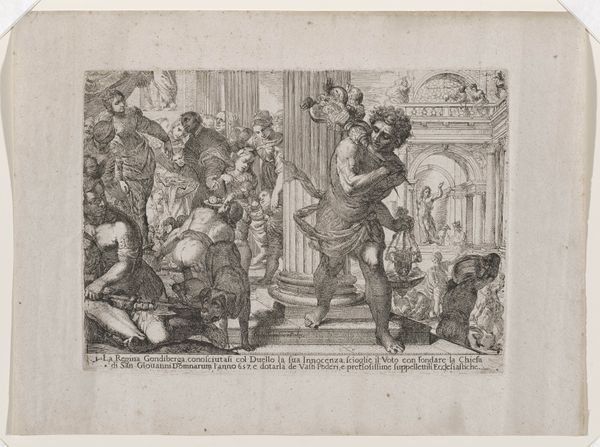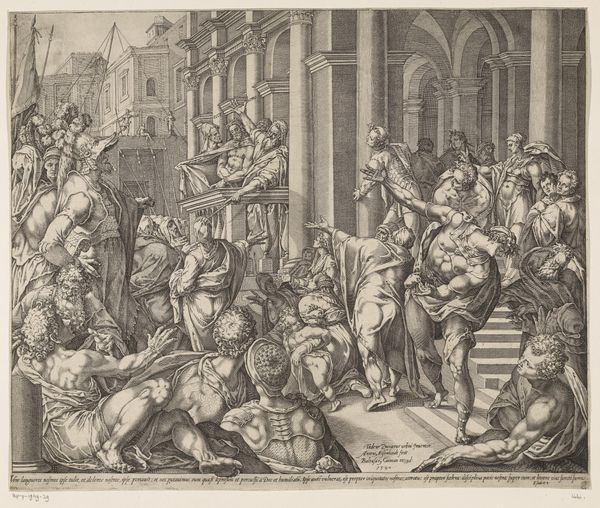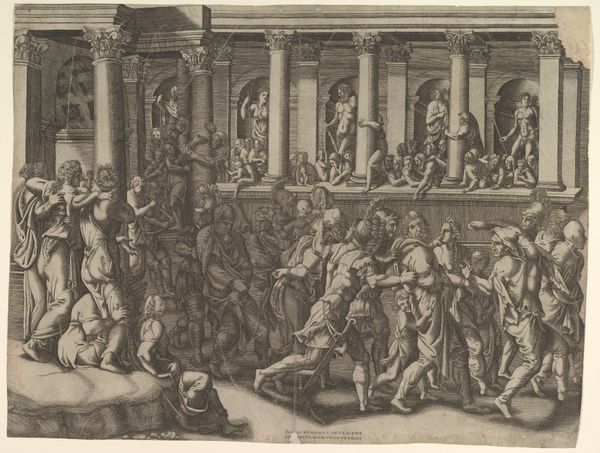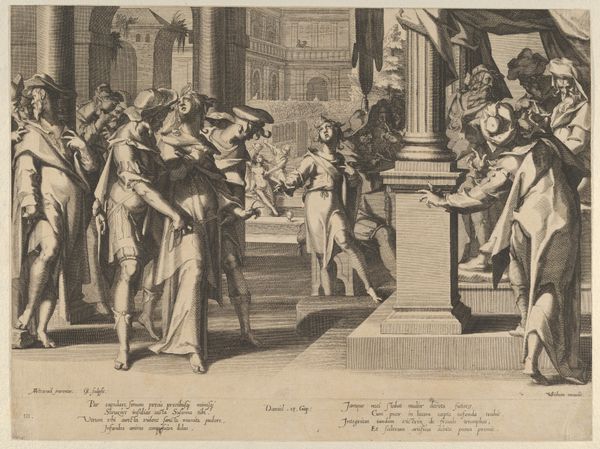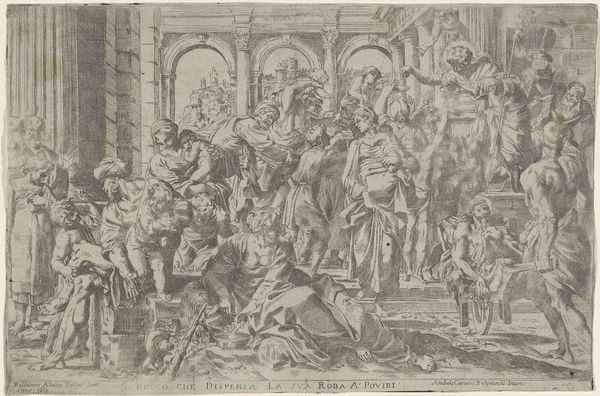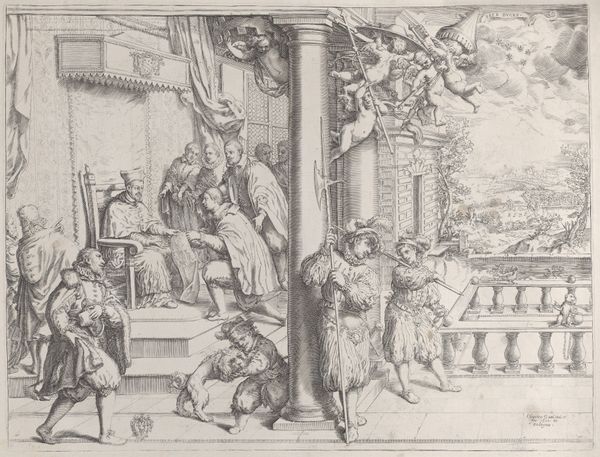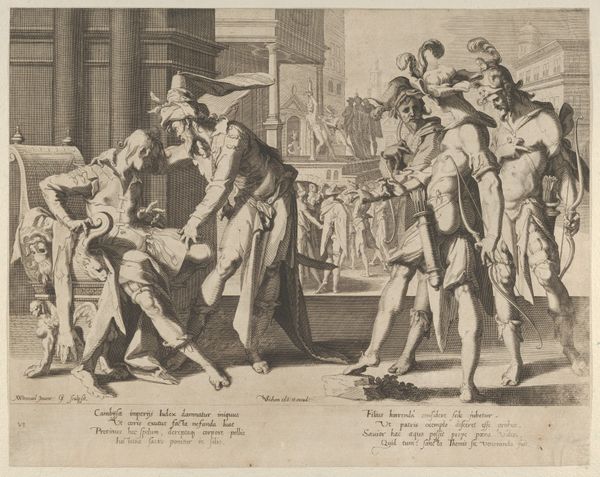
Allegory of Justice (Sanctity of the Law) with a court scene depicting a man being pardoned by a judge, plate XII from Thronus Justitiae, tredecim pulcherrimus tabulis... 1605
0:00
0:00
drawing, print, ink, engraving
#
drawing
#
ink drawing
#
allegory
# print
#
11_renaissance
#
ink
#
genre-painting
#
history-painting
#
northern-renaissance
#
academic-art
#
engraving
Dimensions: sheet: 11 9/16 x 16 3/4 in. (29.3 x 42.5 cm) image: 10 5/8 x 15 13/16 in. (27 x 40.2 cm)
Copyright: Public Domain
Editor: This is Willem van Swanenburg's "Allegory of Justice," an engraving from 1605. It depicts a courtroom scene, but the sheer density of figures is initially quite overwhelming. How should we even begin to analyze this complicated print? Curator: Let us begin by dissecting the composition itself. Observe the use of line – sharp, precise, delineating each figure with meticulous detail. Consider how Swanenburg utilizes contrasting patterns to differentiate the masses, foreground from background. Notice how this layering creates a sense of depth despite the flatness of the printed medium. Editor: So, it's more about the "how" than the "what"? Curator: Precisely. The subject matter, the allegory of justice, is a vehicle. Our focus must remain on the visual language employed. The columns, for example – how do their rigid verticals interact with the fluid diagonals of the figures' gestures? Do the columns suggest constricting forces or simply guide the viewer's gaze? Editor: I see what you mean. The eye does move along those lines. Also, the textures! You can feel the difference between the robes and the polished columns, even though it’s just ink on paper. What do you think about the contrast of the central space and then the construction scene happening in the background through an opening between pillars? Curator: That open aperture disrupts an otherwise enclosed frame. It seems intended to add dynamic tension within the planar organization. By interrupting the scene, a subtle reminder that no formal structure is without an element of instability. Editor: That’s a great way to describe this work, and it helps me understand it without getting bogged down in the literal narrative. Thank you. Curator: Indeed, seeing form rather than simply reading image, that is the starting point of visual literacy.
Comments
No comments
Be the first to comment and join the conversation on the ultimate creative platform.
